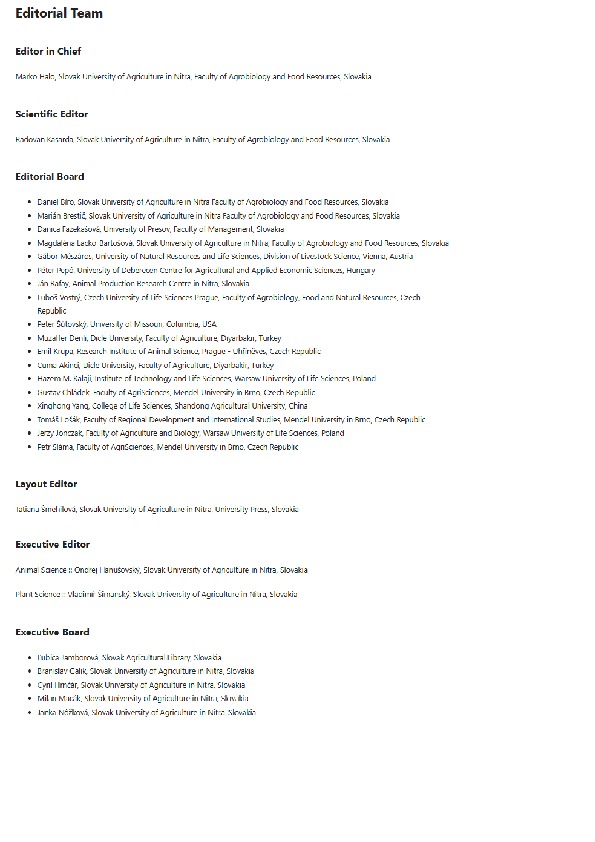id: 37582
Назва: Adaptive Value of Soybean Varieties by the Seed Quality Parameters
Автори: Mazur O., Kupchuk I., Voloshyna O., Mazur O., Biliavska L., Poltoretskiy S.
Ключові слова: oil, protein, adaptability, variance, homeostaticity, plasticity, stability
Дата публікації: 2024-11-09 08:55:05
Останні зміни: 2024-11-09 08:55:05
Рік видання: 2024
Аннотація: Production requires highly adaptive varieties that have a high level of genetic protection of the crop from biotic and abiotic factors of the environment and can maximally realize the potential of the crop in combination with high-quality seeds. The article presents the results of studies on the assessment of soybean varieties by the adaptability of qualitative characteristics in different soil and climatic conditions in terms of the years of research according to the content and output of oil and protein, as well as the intensity of oil and protein formation in soybean seeds. The adaptability of soybean seed quality of the studied varieties was determined by the Eberhard and Russell method. According to the research results, the highest oil content in the seed was observed in the following varieties: Hoverla (22.2%), Artemida (21.1%), and Zolotysta (20.7%), and the highest protein content was recorded in Artemida (39.2%) and Zolotysta (39.3%). It should be noted that the indicated varieties are conservative (bi <1) by the response to changes in the hydrothermal regime, except for Hoverla, which is highly plastic (bi >1) in terms of oil content in the seeds. These varieties have the highest indicators of agronomic stability (As) in terms of protein content in seeds: 99.2; 99.0%, as well as the sequence of distribution of varieties according to homeostaticity of the first (Nom1) and second (Nom2) types: Artemida – 131.4 and 109.5; Zolotysta – 99.2 and 62.0. The highest output of oil and protein from seeds was recorded in Hoverla – 0.48 and 0.805 t.ha-1, Artemida – 0.43 and 0.803 t.ha-1, which belong to highly plastic varieties by the response to the improvement of the agro-background of cultivation, the variance of stability (Si2) in which is as close to zero as possible. The combination of high yield of oil and protein became possible due to the high productivity of Hoverla, as for Artemida, these traits are at the level of above mean values. The highest intensity of oil and protein formation in seeds was observed in Hoverla– 4.25 and 7.12, Artemida – 3.8 and 7.06, Amethyst – 3.43 and 6.72 kg.ha-1 per day, which belong to highly plastic varieties (bi >1), and the stability variance (Si2) in which is as close to zero as possible.
URI: http://repository.vsau.org/repository/getfile.php/37582.pdf
Тип виданя: Статті Scopus
Видавництво: Acta Fytotechnica et Zootechnica. 2024. Vol. 27, Issue 2. P. 157-171. DOI: https://doi.org/10.15414/afz.2024.27.02.157-172
Розташовується в колекціях :
Ким внесений: Адміністратор
Файл : 37582.pdf Розмір : 356769 байт Формат : Adobe PDF Доступ : Загально доступний

| |
|
|